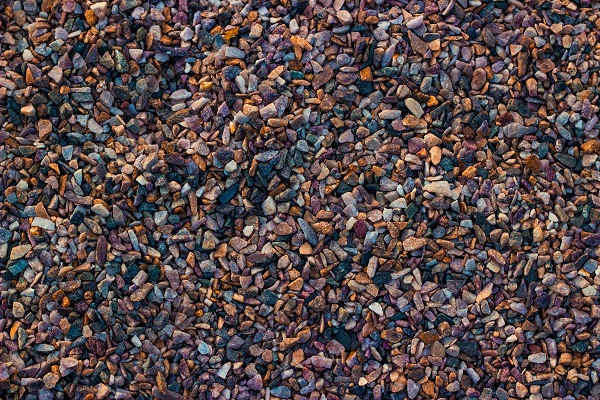The presence of weed in the gravel driveway is a common problem. The weeds are not only unsightly but also can cause damage to your vehicle and tires as well. If you have an existing concrete or asphalt driveway, it will be very difficult for you to remove all the weeds without damaging the surface.
However, if you install a new gravel driveway, then there is no need to worry about removing weeds because they won’t grow on top of the gravel. But what do you do when you want to keep them away from growing in your gravel driveway? Here we discuss some tips that may help you out:
1. Use Weed Barrier Film
The weed barrier film is one of the best ways to prevent weeds from growing in your gravel driveways. It comes with several benefits, such as preventing weeds from sprouting, protecting against water penetration, providing UV protection, and keeping insects at bay.
You should use this product every time before installing any kind of paving material like sandstone, brick pavers, etc. This way, you don’t have to spend extra money on buying these materials later.
Check out the best weed barrier film on Amazon
2. Plant Trees
Planting trees around your home is another effective method. The trees provide shade which prevents sunlight from reaching the soil where weeds usually germinate. They also add beauty to your property by creating a natural environment. Moreover, planting trees helps reduce air pollution. So, plant more trees!
The best tree planting tool from Amazon
3. Add Mulch
Adding mulch around your house is yet another great option to control weeds in your driveway. Mulching keeps moisture levels low so that weeds cannot survive. In addition, it provides nutrients to the ground, which makes sure that grass doesn’t grow over the area. Also, adding mulch reduces dust particles and other pollutants present in the atmosphere. Therefore, make sure to apply mulch regularly to avoid weeds from growing in your garden.
4. Apply Herbicide Sprays
If you really want to get rid of weeds in your driveway, herbicides are the most efficient solution. There are many types of herbicides available in the market today. Some of them include glyphosate, 2-4D, dicamba, trifluralin, and others.
All of these products work effectively to kill weeds. Make sure to read the instructions carefully before using any type of herbicide spray. Follow the directions properly otherwise you might end up harming yourself or even your family members.
Check out the best herbicides on Amazon
5. Remove Grass Clippings Regularly
Grass clippings contain nitrogen which encourages the growth of weeds. Therefore, try to collect grass clippings regularly and dispose of them safely. Don’t just throw them into the garbage bin; instead, take care of them properly. For example, composting them would be a good idea. Composting involves mixing organic matter with manure and worms. Worms eat the waste and convert it into rich fertilizer. Thus, you can reuse the compost again after making certain changes.
6. Avoid Using Lawn Mowers
Using a lawnmower is one of the worst things you could ever do while trying to eliminate weeds in your driveway. When you cut down the grass with a lawnmower, you expose the roots of the grass to oxygen. As soon as the grass starts getting exposed to oxygen, it begins to decompose quickly. And once decomposed, it releases carbon dioxide gas which causes excessive amounts of CO₂ emissions. Besides, cutting down the grass exposes the soil to rainwater which leads to erosion. Hence, it is better to let nature handle the job rather than doing it ourselves.
7. Using Landscape Fabric
Landscaping fabric is an excellent tool for weed prevention. The fabric acts as a physical barrier between the soil and the surface below. Once installed correctly, landscape fabric will keep weeds away from the surface. However, if used incorrectly, it may cause problems. For instance, when the fabric gets wet, it becomes heavy and difficult to move. If not removed immediately, it may trap dirt underneath, causing mud buildup. Furthermore, some people install landscape fabric without removing all the existing vegetation first. That means they leave behind small holes through which weeds can easily penetrate.
Some of the best Landscape fabric on Amazon
8. Use Weed Barrier Pots
Weed barrier pots are also effective tools for preventing weeds in your driveway. They come in different shapes and sizes depending on what kind of plants you wish to protect. You should use this product only if you have already planted seeds or seedlings.
Otherwise, it won’t help much because there isn’t enough space left for new plant growth. Moreover, don’t forget to remove the pot every year since it prevents water drainage. This way, you prevent weeds from sprouting inside the pot.
9. Plant Shrubs Around Your House
Planting shrubs around your home is another great method to deter weeds. It works by creating shade which helps reduce evaporation rates. Additionally, it creates windbreaks that protect against strong winds. These two factors together create perfect conditions for keeping weeds at bay from your gravel driveway.
10. Install Garden Beds
Garden beds are very useful for controlling weeds in your driveway. The truth is, garden beds provide more benefits compared to other methods mentioned above. First, planting flowers and vegetables in these areas provides food sources for birds and insects.

Second, installing flower boxes allows air circulation, which keeps the area cool during the summer months. Thirdly, using raised bed gardening techniques makes sure that no weeds grow under the ground. Lastly, garden beds allow sunlight to reach the entire area, thus reducing the chances of drought.
11. Remove Excess Water From Your Yard
The excessive amount of water in your yard is one of the major reasons why weeds start growing in your driveway. Soil absorbs moisture from rainfall and dew. Excess water in your yard can go directly onto the pavement then the water evaporates rapidly, leaving little room for any type of life form to survive. Therefore, make sure to avoid excess watering, especially near paved surfaces like driveways.
12. Mow Grass Short
Mowing grass short is yet another technique for eliminating unwanted weeds in your driveway. When mowed short, grass doesn’t absorb excess water, making it less likely to develop weeds. Plus, grass with shorter blades requires less maintenance than longer ones. Thus, regularly cutting them reduces the time spent maintaining lawns.
A great tool for trimming grass
13. Apply Compost Tea
Compost tea is a natural solution for killing weeds. All you need to do is apply compost tea to the affected area. Make sure to mix it with water before applying so that it spreads evenly over the whole area. Afterward, wait until the mixture dries up completely, then repeat the process after three weeks. Finally, once the weeds die off, rake them up and dispose of them properly.
14. Spraying Salt Water
Spraying salty water on weed-infested areas can be an efficient way to eliminate weeds. Saltwater contains high levels of sodium chloride, which kills all types of vegetation, including roots. However, saltwater may damage concrete paving materials such as asphalt and cement. Hence, make sure to test its effectiveness first before spraying it everywhere.
15. Spray Insecticidal Oil On Plants
Insecticidal oil is another option for getting rid of weeds. The best thing about insecticidal oils is that they are non-hazardous and environmentally friendly. Simply pour the liquid onto the soil where weeds are located and let it dry naturally. Once dried, spray the plants thoroughly with a hose or brush. Repeat this procedure every two weeks if necessary.
16. Plant Flowers And Vegetables Nearby
Planting flowers and vegetables around your driveway will help keep weeds away. This method works because most weeds don’t thrive in places where there is plenty of plant life nearby. For example, dandelions prefer open spaces while clover thrives in moist environments.
17. Use A Rain Barrel
A rain barrel is a great tool for collecting extra water during rainy days. It collects water from roofs and gutters through a spout at the bottom. Then, use the collected water to irrigate gardens and flower beds. In addition, some people even collect their drinking water using a rain barrel system.

18. Install Porous Pavers
Porous pavers allow water to pass through easily but prevent dirt particles from entering. These pavers also have small holes that drain excess water quickly, allowing it to flow down instead of accumulating. They work well in both wet and dry conditions.
19. Add Sand Or Stones
Adding sand or stones to your driveway helps reduce moisture retention by absorbing water. If you want to add more traction, sprinkle gravel along the edges of driveways. Also, consider adding pebbles to the center of the road to create a smoother surface.
How Do you Make A Gravel Subway?
Gravel subway is an excellent choice for those who love to walk outside their homes. However, if you live near busy roads, you need to think twice about having a gravel road because there will always be chances of accidents due to heavy traffic flow. If you still wish to install a gravel road, here are some tips that may help you out:
-
Choose The Right Type Of Road Material
The first thing that you must consider when choosing a gravel road material is its durability. You should choose a durable material such as concrete pavers. Homeowners have been using concrete pavers for centuries.

It comes in different sizes and shapes. Moreover, they come at affordable prices. They also have high resistance against weather conditions. It means that they won’t crack easily under extreme heat or cold temperatures.
-
Consider Your Budget Before Choosing Paving Materials
The next important factor that you need to keep in mind is budget. Since this project requires lots of money, you need to plan accordingly. First, decide how much money you can spend on paving materials. Then, calculate all costs, including labor cost, equipment rental fee, etc. Once everything is done, compare the total amount with what you spent. Only then can you determine whether you made a wise decision or not.
-
Use Quality Tools
You don’t want to use cheap tools when installing a gravel road. Instead, invest in quality tools like trenchers, shovels, rakes, etc. These tools will make sure that you get a smooth surface without any cracks. Also, these tools will save you time and energy during the installation.
-
Plan Ahead
Do not start working on your gravel road until you know exactly where you want to place each piece of stone. Otherwise, you might end up spending more time and effort than expected. So, before starting work, draw a rough sketch of your entire area so that you can figure out where you want to put every single rock.
-
Work With Professionals
If you want to create a great-looking gravel road, hire professionals. Professional contractors usually offer free estimates and provide top-notch services. Plus, professional contractors understand the importance of safety precautions. That’s why they ensure that workers wear protective gear such as hard hats, gloves, boots, etc.

Step By Step Process of Making a Gravel Driveway
Step – 1
Making a gravel driveway starts with clearing away weeds and grasses around it. Remove unwanted plants using hand pruners or lawnmowers. Afterward, remove the debris left behind after removing weeds and grasses.
Step – 2
The next step involves digging holes for placing rocks. Digging holes takes longer compared to other steps, but it pays off later. Place rocks into the hole one by one. Be careful while doing this task. Don’t forget to fill the holes back with soil once you finish filling them.
Step – 3
After planting stones, spread gravel over the whole area. Spread gravel evenly across the ground. Remember to leave enough space between two pieces of gravel.

How Do Gravel Driveway Differ from Other Driveways
A gravel driveway differs from other types of driveways mainly because it doesn’t require regular maintenance. Unlike asphalt driveways, gravel driveways don’t require frequent repairs. Most people prefer using gravel driveways over asphalt ones because they look cleaner and greener.
What Is A Gravel Driveway Best For?
There are many benefits associated with a gravel driveway. Some of them include:
- Easy Maintenance – As mentioned earlier, gravel driveways do not require constant repair, unlike asphalt driveways. Therefore, you only need to clean dirt off once in a while.
- Low Cost – Compared to other types of driveways, gravel driveways are cheaper. Most of the time, you can find good deals online.
- Eco-Friendly – When compared to asphalt driveways, gravel driveways are eco-friendly. Because they absorb less water, they reduce runoff into nearby rivers and streams.
Maintaining A Gravel Driveway
When you choose to install a gravel driveway, there are certain things that you need to take care of regularly. Here are some tips for maintaining a gravel driveway:
1. Clean Dirt Off Every Week
It is very easy to remove dirt from a gravel driveway. All you need to do is sweep away debris after heavy rains. However, if you notice excessive amounts of dust, you may need to call an expert contractor.

2. Maintain Grading
Grading refers to the height difference between two adjacent areas. If you see uneven surfaces, you may need to adjust grading levels. The best way to maintain the grading level is to add new stones whenever necessary.
3. Remove Stones From Time To Time
Asphalt roads tend to lose their shine over time. But, gravel driveways stay shiny even after several months. Thus, you need to remove old stones periodically. Remember to replace those removed stones with fresh ones.
How Long Will a Gravel Driveway Last
The lifespan of a gravel driveway depends on how well maintained it is. You should be able to use it for at least 10 years without any major issues. Of course, this number will vary depending on weather conditions.
Best Types of Gravel for Your Driveway
We have various types of gravel available today. They range from crushed stone to sandstone. Each type has its advantages and disadvantages. Let us discuss each one of these below:
1. Crushed Stone
This kind of gravel is ideal for creating pathways or walkways. It also works well when used for landscaping purposes. Crushed stone comes in different sizes ranging from 1/4 inch to 3 inches. It makes it easier to spread around your property.

2. Sandstone
Unlike crushed stone, sandstone does not crumble easily. Instead, it stays firm throughout the year. Sandstones come in different colors, including white, grey, brown, black, red, blue, green, yellow, pink, purple, orange, etc. These colors make sandstone more attractive than crushed stone.
3. Gravel Paving
Paved gravel drives are becoming increasingly popular among homeowners. They are considered safer than traditional gravel driveways. Moreover, paved gravel driveways cost much less than concrete driveways.
4. Base Gravel
If you want to create a beautiful landscape, then base gravel is what you need. Base gravel is made up of small pebbles which are mixed. Unlike crushed stone, base gravel is soft enough so that it spreads evenly across the ground.

5. Item Gravel
Another option is item gravel. Item gravel consists of large rocks which can weigh as high as 100 pounds per cubic foot. As such, it requires special equipment to transport them.
6. Pea Gravel
Also, we have pea gravel. Pea gravel is similar to crushed stone but smaller in size. It is usually sold by the bag instead of the ton.

7. Jersey Shore Gravel
Jersey shore gravel is another alternative. It is composed of tiny pieces of rock which resemble beach sand. Because of its fine texture, it looks like real sand.
Frequently Asked Questions About Gravel Driveway
How long do I need to wait before installing my gravel driveway?
There’s no set timeline. However, if you plan to install a gravel driveway within six weeks, then you might consider waiting until springtime. During the winter season, there could be snowfall. In addition, temperatures during winter are generally lower than in summer seasons. Therefore, you don’t want to risk having water seep into your driveway.
What is the right amount of gravel needed for my driveway?
According to experts, you should always keep an eye out for the following factors while choosing the correct quantity of gravel:
• Amount of traffic – More people mean higher chances of getting dirty feet. So you must ensure that the area where you intend to lay down gravel receives adequate amounts of vehicles.
• Size of the driveway – Larger driveways require larger quantities of gravel. On average, 2-3 tons of gravel for every 10 ft length of the driveway.

• Type of soil – If your soil has clay content, you will need to add additional gravel to prevent erosion and other problems.
• Weather conditions – The temperature determines how fast the gravel dries after being laid on the surface. You may experience some delays if the weather is cold.
Can I use asphalt shingles over my existing asphalt roof?
Yes! But only if you choose the right type of shingle. For instance, if you opt for EPDM shingles, they won’t stick to the old ones. Also, these types of shingles tend to crack under extreme heat.
Do I need to remove any trees or shrubs before laying down gravel?
No. Trees and bushes provide shade and help retain moisture. Thus, removing them would cause damage to your lawn.
Is it safe to walk barefoot on gravel?
Walking barefooted on gravel isn’t dangerous because it doesn’t contain sharp stones. However, make sure not to step on loose gravel when walking around. This way, you wouldn’t get hurt.
Conclusion
Gravel drives are one of the most popular ways to beautify your home exterior. They come with many benefits, including durability, low maintenance costs, and ease of installation. When selecting the best kind of gravel, you should take note of all the points mentioned above. Hopefully, this article helped you find answers to your questions about gravel driveways.






